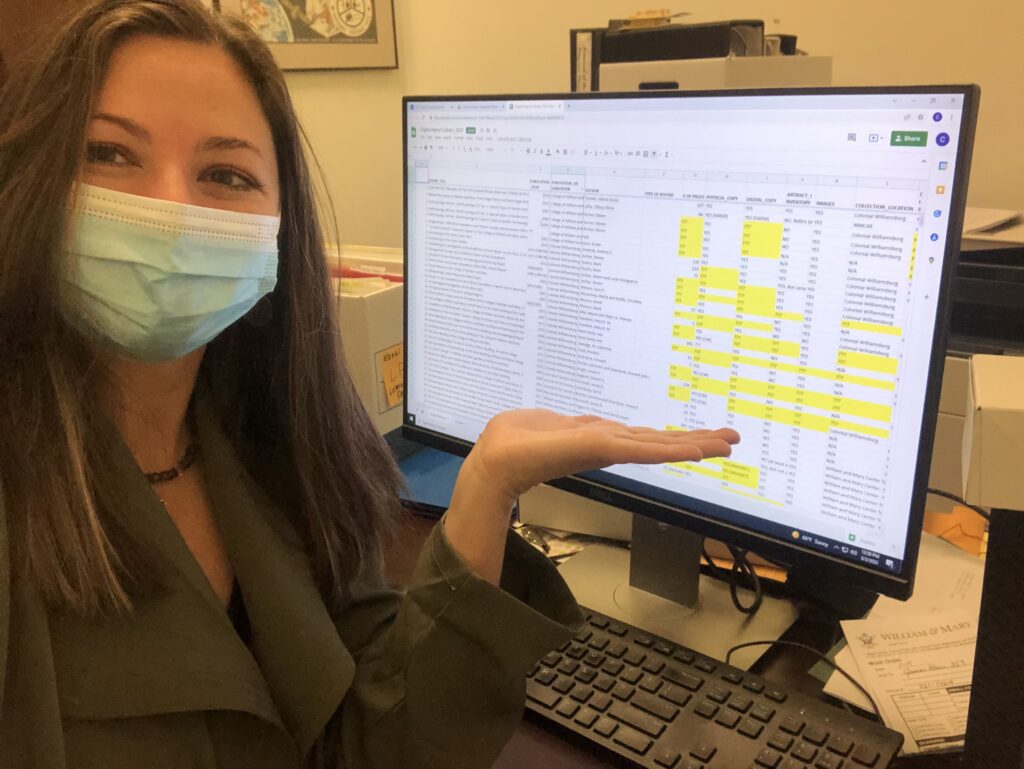By Molly Shilo, 2020-2021 American Studies Graduate Assistant
As part of the Lemon Project’s mission to uncover the university’s role in perpetuating slavery and racial oppression, I have been conducting archival research through Special Collections and Colonial Williamsburg’s Rockefeller Library. Primarily, I have been looking through documents of some of William & Mary’s first presidents to ascertain whether they might have been enslavers and whether those enslaved people may have worked for, or been connected to, the College in any way. This research is crucial for a few different reasons. It could help unravel the College’s reliance upon slavery and relationship with enslaved individuals by illuminating how individuals presiding over the College during its formative years might have implemented policy and structured the College around their racist beliefs. Although the focus initially may be on the presidents themselves, this research will hopefully guide us towards better understanding the lives and experiences of enslaved people working for the College. Finally, this research connects broadly to histories of American institutions that were built upon, and only made possible, by the labor of enslaved people.
A great example is a letter written from Robert Saunders, Jr. to his wife, Lucy, on May 3, 1863. While Saunders begins with addressing the health of his children, he then turns to discussing the status of his enslaved people. Since the letter is written after the Emancipation Proclamation, he is focused on the individuals who had likely left the plantation. Although he mentions concerns over “Jim” who has run away before and “Molly” who he has not heard from, he confirms that most of the “servants” left behind in Williamsburg are still in their place.
While Saunders is concerned with the loss of labor and income from the enslaved people he owns and has hired out, this letter provides glimpses into the lives of those enslaved people. We learn that “Jim” has previously escaped but was unfortunately returned to Saunders’ home. There is also a suggestion that he potentially has influenced other enslaved people to attempt to run away. We learn that one of his enslaved men, “Sam,” was “hired at the lunatic asylum,” demonstrating a specific job often not spoken about. Additionally, we hear of “Jacob” who left with his wife, an enslaved woman owned by Mrs. Tucker. Finally, we hear gossip that a neighbor’s slave, Fanny, likely ran off with her husband. These brief mentions provide insights into intimate relations between the enslaved, their decisions about remaining or staying after the Emancipation, and the uncertainty about what exactly was going to happen.
Although this correspondence is after Saunders’ tenure as president of the College, it still demonstrates that he was an enslaver at some point during his life— and likely during his involvement with the College. This letter, and the rest of his correspondence contained in the archives at Swem’s Special Collections, is just one way to unravel his past, his impact on the College, and his beliefs and actions regarding slavery and race.
Comments closed


